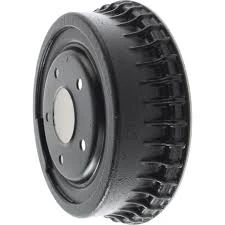
-
 Afrikaans
Afrikaans -
 Albanian
Albanian -
 Amharic
Amharic -
 Arabic
Arabic -
 Armenian
Armenian -
 Azerbaijani
Azerbaijani -
 Basque
Basque -
 Belarusian
Belarusian -
 Bengali
Bengali -
 Bosnian
Bosnian -
 Bulgarian
Bulgarian -
 Catalan
Catalan -
 Cebuano
Cebuano -
 Corsican
Corsican -
 Croatian
Croatian -
 Czech
Czech -
 Danish
Danish -
 Dutch
Dutch -
 Englanti
Englanti -
 Esperanto
Esperanto -
 Estonian
Estonian -
 Finnish
Finnish -
 French
French -
 Frisian
Frisian -
 Galician
Galician -
 Georgian
Georgian -
 German
German -
 Greek
Greek -
 Gujarati
Gujarati -
 Haitian Creole
Haitian Creole -
 hausa
hausa -
 hawaiian
hawaiian -
 Hebrew
Hebrew -
 Hindi
Hindi -
 Miao
Miao -
 Hungarian
Hungarian -
 Icelandic
Icelandic -
 igbo
igbo -
 Indonesian
Indonesian -
 irish
irish -
 Italian
Italian -
 Japanese
Japanese -
 Javanese
Javanese -
 Kannada
Kannada -
 kazakh
kazakh -
 Khmer
Khmer -
 Rwandese
Rwandese -
 Korean
Korean -
 Kurdish
Kurdish -
 Kyrgyz
Kyrgyz -
 Lao
Lao -
 Latin
Latin -
 Latvian
Latvian -
 Lithuanian
Lithuanian -
 Luxembourgish
Luxembourgish -
 Macedonian
Macedonian -
 Malgashi
Malgashi -
 Malay
Malay -
 Malayalam
Malayalam -
 Maltese
Maltese -
 Maori
Maori -
 Marathi
Marathi -
 Mongolian
Mongolian -
 Myanmar
Myanmar -
 Nepali
Nepali -
 Norwegian
Norwegian -
 Norwegian
Norwegian -
 Occitan
Occitan -
 Pashto
Pashto -
 Persian
Persian -
 Polish
Polish -
 Portuguese
Portuguese -
 Punjabi
Punjabi -
 Romanian
Romanian -
 Russian
Russian -
 Samoan
Samoan -
 Scottish Gaelic
Scottish Gaelic -
 Serbian
Serbian -
 Sesotho
Sesotho -
 Shona
Shona -
 Sindhi
Sindhi -
 Sinhala
Sinhala -
 Slovak
Slovak -
 Slovenian
Slovenian -
 Somali
Somali -
 Spanish
Spanish -
 Sundanese
Sundanese -
 Swahili
Swahili -
 Swedish
Swedish -
 Tagalog
Tagalog -
 Tajik
Tajik -
 Tamil
Tamil -
 Tatar
Tatar -
 Telugu
Telugu -
 Thai
Thai -
 Turkish
Turkish -
 Turkmen
Turkmen -
 Ukrainian
Ukrainian -
 Urdu
Urdu -
 Uighur
Uighur -
 Uzbek
Uzbek -
 Vietnamese
Vietnamese -
 Welsh
Welsh -
 Bantu
Bantu -
 Yiddish
Yiddish -
 Yoruba
Yoruba -
 Zulu
Zulu
brake drum dust
Understanding Brake Drum Dust Causes, Effects, and Management
Brake drum dust is a byproduct generated during the braking process of vehicles that use brake drum systems. As the brake shoes press against the brake drum to slow down or stop the vehicle, friction is created, leading to the wear and tear of braking materials. This wear results in the production of fine particles known as brake dust, which can pose a range of issues if not properly managed.
Causes of Brake Drum Dust
The primary source of brake drum dust is the friction material used in the brake shoes. These materials are typically made from a combination of metals, fibers, and chemical compounds designed to create a reliable grip on the drum. Over time and with repeated use, the constant friction causes these materials to abrade and produce tiny particles. Factors including driving style, climate conditions, and the quality of the brake components play a significant role in determining the amount of brake dust generated.
High-performance braking, such as that found in racing or aggressive driving, tends to increase the production of brake drum dust due to the higher levels of heat and friction involved. Similarly, stop-and-go traffic can elevate dust accumulation as the brakes are engaged frequently. Furthermore, older vehicles may have brake components that wear down more easily, leading to a greater volume of dust compared to newer, more efficient braking systems.
Effects of Brake Drum Dust
The accumulation of brake drum dust poses several potential issues. For vehicle owners, the most immediate concern is aesthetics; the fine powder can settle on wheels, tires, and vehicle surfaces, leading to an unsightly appearance. Over time, this dust can also corrode wheel finishes and impact the longevity of the tires.
brake drum dust

From a health perspective, prolonged exposure to brake dust can be a concern, especially as it may contain harmful substances such as asbestos or heavy metals, especially in older brake systems. When inhaled or ingested, these particles can contribute to respiratory issues or other health problems. Furthermore, improper disposal of brake dust can lead to environmental contamination, creating hazards for soil and water systems.
Management and Mitigation
To manage brake drum dust effectively, regular maintenance and cleaning practices are essential. Vehicle owners should routinely wash their wheels and tires to remove accumulated dust, not only for aesthetic reasons but also to prevent potential damage. Utilizing a high-quality wheel cleaner that can help break down this dust while avoiding harsh chemicals is advisable.
Furthermore, considering the upgrade of brake components can significantly mitigate dust generation. Manufacturers now offer brake pads and shoes made from advanced materials designed to produce less dust without compromising braking performance. These products not only enhance vehicle safety but also reduce the amount of airborne and surface dust created during braking.
Lastly, proper disposal of brake dust is crucial. It is advisable to consult local regulations regarding the disposal of automotive waste to prevent environmental contamination. Recycling programs for automotive materials may be beneficial to ensure that harmful substances are dealt with responsibly.
In conclusion, while brake drum dust is an inevitable product of vehicle operation, understanding its causes, effects, and management strategies can significantly mitigate its impact. Regular maintenance, the use of quality components, and environmental awareness can contribute to cleaner vehicles and a healthier driving experience. Owners must stay informed and proactive regarding brake drum dust to ensure both their safety and the integrity of their vehicles.
-
Why Choosing the Right Brake Drum Manufacturer Matters for Vehicle Safety and PerformanceUutisetJun.05,2025
-
Understanding Heavy Duty Brake Drums: Key to Truck Safety and PerformanceUutisetJun.05,2025
-
Reliable Braking Systems: Rear and Trailer Drum Brake Solutions for Heavy-Duty ApplicationsUutisetJun.05,2025
-
Power and Precision: Why Brake Drums Still Dominate in Vehicle Safety SystemsUutisetJun.05,2025
-
Brake Drums: Essential Components for Vehicle Safety and PerformanceUutisetJun.05,2025
-
Superior Brake Drums & Rotors for Reliable Stopping PowerUutisetJun.03,2025
-
Premium Brake Drums for Maximum Stopping PowerUutisetJun.03,2025
